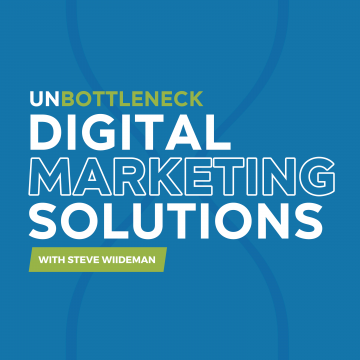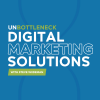Podcast: Play in new window | Download
In this episode of the Unbottleneck Podcast, Steve Wiideman is joined by digital marketing expert Ashley Saunders to discuss how to build a solid content plan for your blog or affiliate website.
About Our Guest: Ashley Saunders
Ashley J. Saunders has worked in a number of industries from Music to Property to E-commerce and is involved in building digital assets and providing content marketing strategy advice to affiliate website owners. Based in Bath, England, Ashley runs A.J.S. Digital Group offering a Content Marketing Framework Course and Website Content Strategy Services.
Sponsored by Ryte
Featured in this episode:
- Nail Your Messaging and Communication
- Rank for the Right Keywords
- Building an Effective Content Plan
- Affiliate Marketing Best Practices
What Are You Trying to Communicate?
The first step to building a solid content plan is to focus on exactly what you are trying to communicate with your audience.
When developing this plan, your immediate content goal should not be to simply sell. Instead, your goal should be to establish authority and trust by showing up in a meaningful way that helps your audience overcome their pain points or concerns.
This type of content is referred to as “top of funnel.” Top of funnel content is purposed to build brand awareness by creating helpful content that answers the questions that people are already asking.
Here are some examples of top of funnel content that will allow your expertise to shine through:
- “How to __________”
- “What is _________”
- “When to___________”
- “Best Way to ___________”
Ranking for the Right Keywords
In order for your content to rank, you have to ensure that it is searchable with the appropriate keywords. Depending on what industry you’re in, some keywords may be harder to rank for than others (i.e “credit cards”). However, a best practice for choosing the right keywords is to start thinking in question form.
Going after long tail keywords is more effective because you have the opportunity to rank based on specific queries. For example, instead of trying to rank for “credit card” try ranking for “how can I get a new credit card?”, “what is a good credit score?”, or “which credit cards have better cash back rewards?”.
You can use keyword tools that will provide you with data that will show you which queries are more popular based on search volume. Based on this data, you can prioritize your content by starting with the queries that are most relevant or in demand.
Some free and paid keyword tools you can use to start planning your content include:
- Ubersuggest (Free)
- Google Keyword Planner (Free)
- Answer the Public (Free and Paid Version)
- Ahrefs (Paid)
- SEMRush (Paid)
Building a Content Plan
Once you have your list of keywords, you can begin organizing your content into pillars based on categories, topics or themes.
As you write your content, you should focus on genuinely being the most helpful solution in comparison to your competitors. Allow yourself to have a voice in the industry and use your expertise to bridge the gap between what you offer and what solutions your audience is looking for.
Tips to Create Compelling Content
- Create evergreen content – solve for the problems of today and tomorrow
- Diversify your content – don’t solely rely on written content
- Create original images and graphics – don’t solely rely on stock images
- Write like you talk! – it’s OK to share a bit of your personality
- Collaborate with other industry leaders – don’t get stuck in your own bubble
Affiliate Marketing: Don’t Sell, Tell
Affiliate marketing is a great way to earn passive income. An affiliate promotes a merchant’s product or service on their website in order to drive sales and for every sale, they earn a commission. Sounds simple right? Not necessarily!
The best affiliate marketers do not fill their website with sales jargon. Instead, they still focus on creating the most helpful content to help consumers make a more informed decision before moving forward with a purchase of a product or service. For example, “We’ve evaluated five products based on ________.”
Overall, your content should be created with your audience in mind. If done correctly, your content will bring you the conversions you are looking for!
Keep up with the latest in SEO and digital marketing strategies. Follow Steve on LinkedIn!




